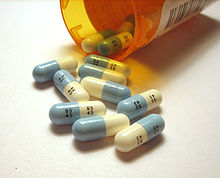If you use Tylenol for PMS Relief , menstrual cramps, backaches. headaches or any other pain you need to know why Tylenol maker Johnson & Johnson such lowered the maximum recommended dosage. You should rethink why how much you use and how often.
Just because Tylenol is over-the-counter does not necessarily mean it’s safe.
Some experts say they also worry about overuse of other medications that consumers can purchase off pharmacy shelves without a prescription, such as the pain reliever ibuprofen, Theraflu for colds, and the antihistamine Benadryl.
“It’s important for the public to realize all drugs have side effects. It doesn’t matter if they’re prescription, over-the-counter, herbals or nutritional supplements. If they have active ingredients, they have side effects and can interfere with normal body functions,” says Brian Strom, director of the Center for Clinical Epidemiology and Biostatistics at the Perelman School of Medicine at the University of Pennsylvania.
He says Tylenol is an “extraordinarily” safe drug at proper doses, even though its overuse is a leading cause for liver transplants in patients with acute liver failure. But, he says, “It has a narrow therapeutic ratio. The toxic dose and the therapeutic dose are very close.”
Commonly used over-the-counter medications may carry risks, say experts.
Acetaminophen (Extra Strength Tylenol). For headaches, joint and muscle pain, fever.
Overuse risks: Liver damage or failure. May cause liver problems at lower doses in alcohol users, or in those who take other drugs containing acetaminophen.
Ibuprofen (Advil, Motrin), a nonsteroidal anti-inflammatory drug (NSAID). Reduces pain and swelling related to arthritis. Relieves headache, fever, menstrual cramps.
Overuse risks: Gastrointestinal pain, bleeding. Kidney damage.
Diphenhydramine (Benadryl), antihistamine used to prevent, reduce hayfever and other allergy symptoms.
Overuse risks: Memory loss and disorientation, especially in elderly. Drowsiness, dryness.
Loratadine (Claritin), antihistimine used to relieve hayfever, other allergy symptoms.
Overuse risks: Sleepiness, fast heart rate. May lose effectiveness over time. Claritin-D includes an additional active ingredient, pseudoephedrine sulfate, which may cause insomnia or restlessness. Pseudoephedrine should not to be taken with certain medications for Parkinsons, depression, psychiatric or other emotional conditions.
Dextromethorphan, a cough suppressant, and Doxylamine succinate, an antihistamine (NyQuil Cough).
Overuse risks: Can cause drowsiness, especially when mixed with sleeping medications and alcohol. Not to be taken with certain medications for Parkinsons, depression, psychiatric or other emotional conditions.
Ranitidine (Zantac), an acid reducer, treats ulcers and gastroesophageal reflux disease (GERD).
Overuse risks: May lose effectiveness over time. Long-term acid suppressor use could lead to poor absorption of some forms of calcium.
For menstrual cramps and period pain try our PMS Relief Herb Pack. We guarantee pain relief in 30 minutes or less. It’s also great for the irritability and moodiness that often accompany your monthly menstrual cycle.
Sources: Brian Strom, Perelman School of Medicine at the University of Pennsylvania; Winston Parris, Duke University Medical Center; Lisa McDevitt, Tufts Medical Center; Sarah Anderson, University of Colorado School of Pharmacy; Ausim Azizi, Temple University School of Medicine.
For more information on OTC pain killers see my Huff post article: Pain Relief without Pain Killers



